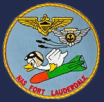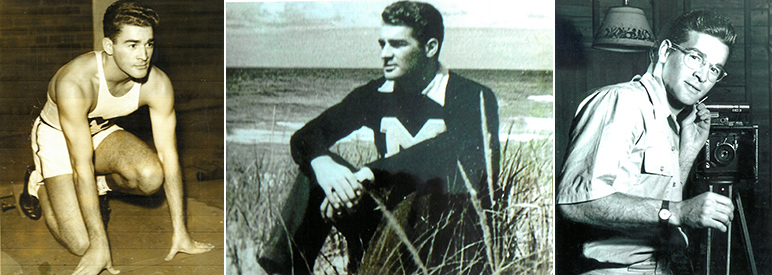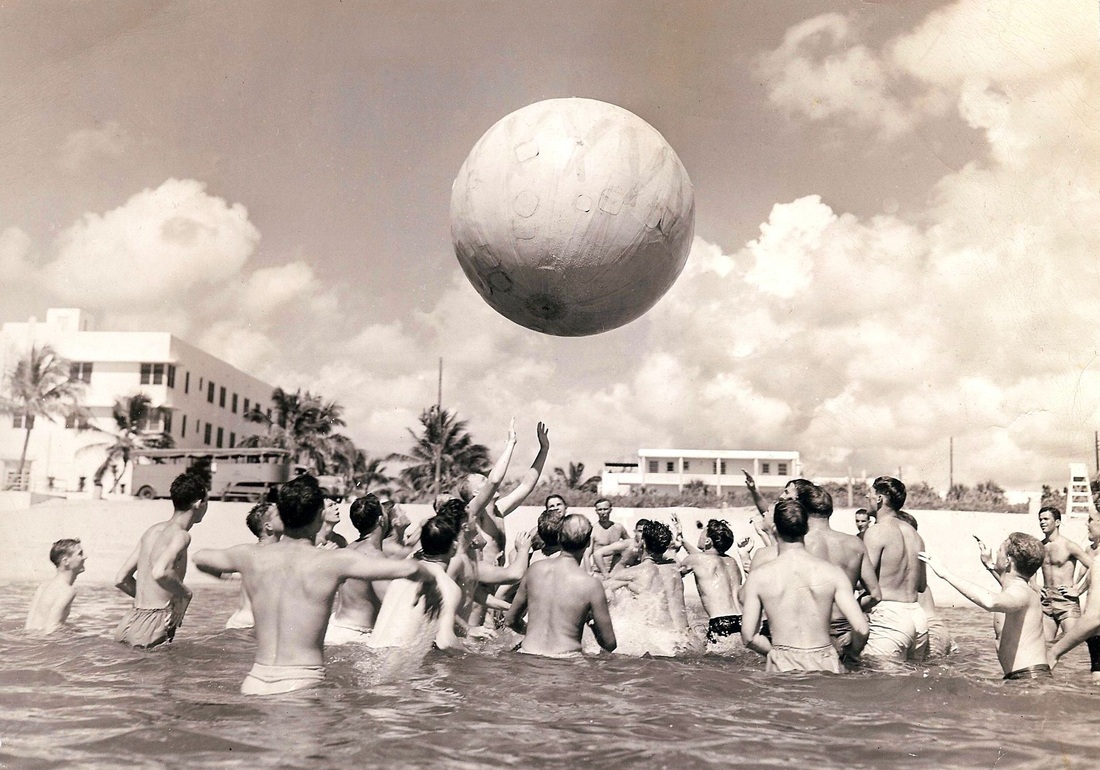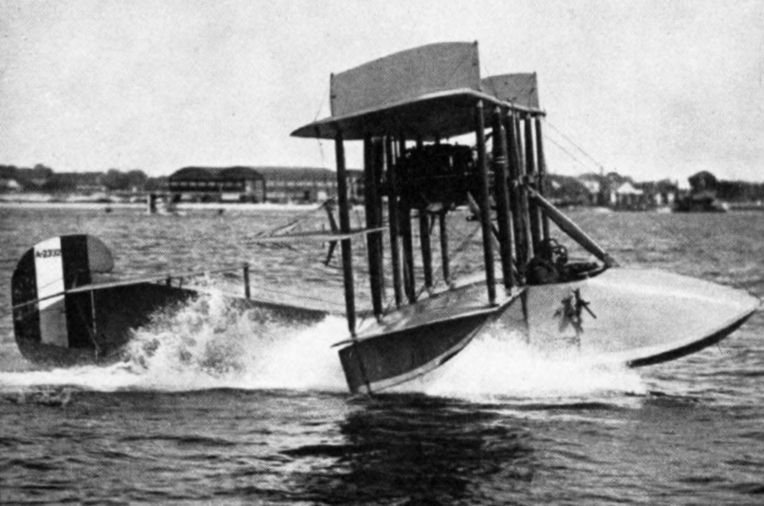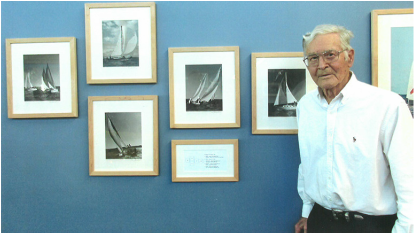PHILLIP BALYEAT, USNR WWII
Naval Aviation Cadet Program
Athletic Training Officer at NAS Fort Lauderdale
Phillip Balyeat turned 100 years old on July 20, 2015. He is considered to be one of the photographers responsible for creating the iconic postcard images that shaped the world’s view of the Grand Traverse, Michigan region in the 1950s and 1960s.
Phil was born in Sparta, Michigan, just north of Grand Rapids, on July 20, 1915. He played football at Michigan State and ran track at the University of Michigan. During World War II, Phil became a Navy Athletic Training Officer as part of the Naval Aviation Cadet Program.* It was at this time that he discovered his love of photography and he would spend as much time as he could in photography labs at different navy bases. Shortly after marrying in 1941 Phil reported to the Naval Academy in Annapolis, Maryland and with his new wife at his side, Phil and Onalee were first stationed in Iowa City, then in Norman, Oklahoma, where their daughters were born. Duty took them to Naval Air Station Jacksonville and then to Naval Air Station Fort Lauderdale, where Phil was Athletic Officer until the end of the war.
"I served nearly four years in WWII under the V-5 Naval Aviation Program. During my years in the service, I spent as much time as possible in the photography dark rooms under talented Navy Chiefs at each of my four bases. One of the bases I served at was NAS Fort Lauderdale, where I was a Swimming and Lifesaving Instructor. I taught pilots lifesaving techniques such as escaping from a plane, and swimming in burning water. While I was stationed here, I would take news photos for the Miami Daily News, and covered sailing races from Fort Lauderdale to Nassau.
After the war, I moved with my wife Onalee and my then two young daughters ( they would raise three children ), to Lido Beach and St. Armand's Circle on Lido Key, Florida. I prepared to open a photo shop on the circle. After selling photos of sponge fishermen and slide sets of scenery around the Sarasota area, I lost out on the photo shop I had planned, so we picked up and decided to return to Traverse City in northern Michigan, which I had left in 1942 at the height of World War II. And here we started over, owning several businesses including foremost The Camera Shop, two antique shops, several years in real estate, and my specialty: my color postcard business, and scenic photography."
PHIL BALYEAT’S FAVORITE STORY
Balyeat was in Traverse City for a summer job teaching swimming at Clinch Park when he recalls:
“I’m teaching swimming one day and one of my students was out in deeper water than he thought he was in, and he started yelling for help. And I had my dad’s gold watch in my pocket to keep time with, and I looked around for somebody to hold my watch, so I could go out and pull that kid in,” he said. He saw two young ladies nearby. “And so, there were two girls sitting there, and one of them was my future wife, so I handed her the watch to see if she could hold it,” he said. “I pulled him in. Everybody remembers the day that I pulled that kid in — especially my wife remembers, and me. So we met that day and I lost track of her completely, for two years.” Balyeat said it wasn’t until two summers later, when he was back in town and now teaching at Traverse City High School, that he ran across her again. That was 1940. “I was out on a double date one night and the girl that I’d had hold my watch was in the backseat with the four of us. I never forgot her,” he said. “I thought she was the most beautiful girl in Traverse City, and I still think so.” Onalee Balyeat passed away in 2011 at the age of 93. Phil passed away in 2016.
PHIL BALYEAT’S FAVORITE STORY
Balyeat was in Traverse City for a summer job teaching swimming at Clinch Park when he recalls:
“I’m teaching swimming one day and one of my students was out in deeper water than he thought he was in, and he started yelling for help. And I had my dad’s gold watch in my pocket to keep time with, and I looked around for somebody to hold my watch, so I could go out and pull that kid in,” he said. He saw two young ladies nearby. “And so, there were two girls sitting there, and one of them was my future wife, so I handed her the watch to see if she could hold it,” he said. “I pulled him in. Everybody remembers the day that I pulled that kid in — especially my wife remembers, and me. So we met that day and I lost track of her completely, for two years.” Balyeat said it wasn’t until two summers later, when he was back in town and now teaching at Traverse City High School, that he ran across her again. That was 1940. “I was out on a double date one night and the girl that I’d had hold my watch was in the backseat with the four of us. I never forgot her,” he said. “I thought she was the most beautiful girl in Traverse City, and I still think so.” Onalee Balyeat passed away in 2011 at the age of 93. Phil passed away in 2016.
*Naval Aviation Cadet Program
To meet the demand for aviators the Navy created a cadet program similar to the Flight Officer program used by the Army.
To meet the demand for aviators the Navy created a cadet program similar to the Flight Officer program used by the Army.
Naval Aviation Cadet Act (1935)
On April 15, 1935 Congress passed the Naval Aviation Cadet Act. This set up the Volunteer Naval Reserve class V-5 Naval Aviation Cadet (NavCad) program to send civilian and enlisted candidates to train as aviation cadets. Candidates had to be between the ages of 19 and 25, have an associate's degree or at least two years of college, and had to complete a bachelor's degree within six years after graduation to keep their commission. Training was for 18 months and candidates had to agree to serve for at least three more years of active duty service.
On April 15, 1935 Congress passed the Naval Aviation Cadet Act. This set up the Volunteer Naval Reserve class V-5 Naval Aviation Cadet (NavCad) program to send civilian and enlisted candidates to train as aviation cadets. Candidates had to be between the ages of 19 and 25, have an associate's degree or at least two years of college, and had to complete a bachelor's degree within six years after graduation to keep their commission. Training was for 18 months and candidates had to agree to serve for at least three more years of active duty service.
Memories of Flight 19, by Phil Balyeat
Interview by Roger Putman
Interview by Roger Putman
Phillip Bayleat at University of Michigan | Northern Express Article | Record Eagle Article | UpNorthLife Article
Biography prepared by Minerva Bloom from news articles and information submitted by Phil Balyeat's friend-- Mr. Roger Putman
Museum's Books | Memberships | Newsletter | NASFL History | Flight 19 | Memorial | Volunteer | Media Kit | Veterans History
|
Copyright © NAS Fort Lauderdale Museum
For use of images or text please contact webmaster Website created by Moonrisings, August 3, 2010 |
